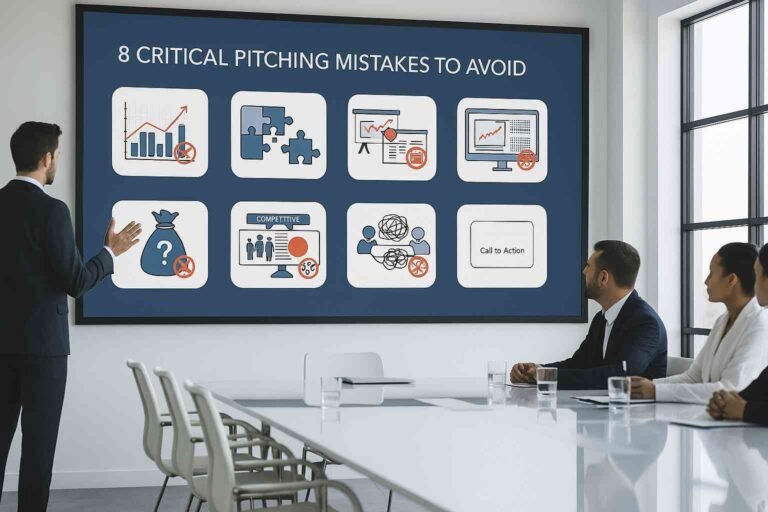
For many years, Nokia was the most loved mobile phone brand in the world. People trusted it because the phones were strong, simple, and lasted for years. Families across many countries still remember their first Nokia phone. It felt unbreakable and dependable. Because of this strong history, Nokia became more than just a company. It became a symbol of quality.
But everything changed very quickly. Within a short time, Nokia lost its top position and struggled to compete. Today, many people still wonder how such a powerful company declined so fast. This long journey gives every business an important lesson about change, technology, and leadership.
A Short, Simple History of Nokia
Nokia started in 1865 in Finland, not as a mobile company, but as a paper mill. Over many years, the company moved into different industries like cables, rubber boots, televisions, and electronics. Nokia was never afraid to try new things.
By the 1980s and 1990s, the world entered a new era of mobile communication. Nokia saw the opportunity early. They created mobile phones that were easy to use and built to last. Phones like the Nokia 1100 and Nokia 3310 became incredibly popular. They were affordable, strong, and simple. Nokia soon became the world leader in mobile phones.
During the 2000s, Nokia had its peak moment. They controlled more than 40% of the global mobile market. This meant almost every second phone sold was a Nokia. To many people, Nokia represented trust and durability.
But while Nokia was at the top, the world was changing quietly. A new type of smartphone was coming. It was not about buttons anymore. It was about software, apps, and touchscreens. Nokia did not see the danger early enough. This slow reaction changed everything.
1. Nokia Believed Its Success Would Last Forever
Success can make any company comfortable. Nokia enjoyed huge growth for many years. Because of this, the company believed that customers would always prefer Nokia phones.
But markets don’t stay the same. Technology changes faster than anyone expects. When smartphones began to appear, Nokia thought it still had time. They did not move quickly because they assumed their strong position would protect them.
This overconfidence made Nokia slow. They failed to adapt when people started wanting touchscreens and better app experiences.
Business Lesson:
Never believe success will protect you forever. Every business must stay alert and accept change early.
2. Nokia Focused Too Much on Hardware and Ignored Software
Nokia always made strong and reliable phones. This made them proud of their hardware quality. But the new smartphone world was not just about good hardware. It was mainly about software.
Apple introduced the iPhone with a smooth operating system. Google launched Android, which allowed apps from everywhere. Meanwhile, Nokia was stuck with the Symbian OS, which was old and difficult to improve.
Developers found it hard to create apps for Symbian. The operating system also became slow and confusing for users. This made Nokia phones feel outdated compared to Apple’s and Android’s modern experience.
Business Lesson:
Technology must evolve. A company must upgrade its software, systems, and user experience, not only its physical product.
3. Nokia Was Slow in Making Decisions
Inside Nokia, teams struggled to make decisions quickly. There were too many layers of approval. Employees were afraid to speak openly about issues or failures because the company culture punished mistakes.
This made Nokia slow while competitors moved quickly. When the smartphone wave started, Nokia was still discussing plans while Apple and Samsung were already launching new models.
This delay cost Nokia precious time.
Business Lesson:
Fast companies win. Decisions should be simple, quick, and clear. A slow company loses even if it has good ideas.
4. The Competition Grew Faster and Smarter
Apple changed the entire mobile industry with the iPhone. Samsung responded quickly by adopting Android and improving its models every year.
Both companies innovated at a speed Nokia could not match. They were quick, flexible, and willing to take risks. They also focused heavily on design, apps, and user experience. Customers suddenly had better choices.
Within a few years, Apple and Samsung captured the market that Nokia once ruled.
Business Lesson:
Never underestimate competitors. Watch the market closely and upgrade your products even before customers ask.
5. Nokia Chose the Wrong Partnership
When Nokia finally realized its mistake, it needed a strong operating system. Instead of choosing Android, they partnered with Microsoft and used Windows Phone OS.
Windows Phone looked modern, but it had many problems:
- It did not have enough apps
- Developers were not interested
- Updates were slow
- Customers could not find their favourite applications
This made Nokia’s new smartphones less attractive. By the time Nokia changed its strategy, it was already too late.
This decision pushed the company further down.
Business Lesson:
Partnerships must be chosen wisely. A business should always choose platforms that have strong support, long-term potential, and market trust.
6. Nokia Did Not Listen to What Customers Wanted
Customers wanted touchscreens, easy navigation, fast internet access, and a large app store. But Nokia continued making keypad phones for too long. They kept improving old designs instead of creating new ones.
This disconnect created a gap between customer expectations and Nokia’s products.
Business Lesson:
The customer decides your future. When businesses listen to customer needs, they grow. When they ignore them, they decline.
Summary Table: Why Nokia Really Failed
| Reason | Simple Explanation |
| Overconfidence | They believed success would continue forever |
| Weak software (Symbian) | Could not compete with iOS or Android |
| Slow decisions | Other companies moved faster |
| Strong competitors | Apple and Samsung changed the game |
| Microsoft partnership | Windows Phone lacked apps |
| Not listening to customers | They stayed with old models too long |
7. What Today’s Businesses Can Learn
Nokia’s story is full of lessons that apply to every business, small or large.
✔ Adapt Early
Change will come. If you adapt early, you stay ahead.
✔ Keep Things Simple
Simple decisions and simple products often work best.
✔ Listen to Your Customers
Customer needs guide your future. Always pay attention to feedback.
✔ Build Strong Software and User Experience
Today’s customers expect products that feel simple, clear, and easy to use. This applies not only to technology companies like Nokia, but also to anyone creating digital content or presentations. A clean and consistent style helps people understand your message better. If you want to explore how branding affects communication, you can check this helpful guide from Deckez on why branding matters in your presentations. Good branding ensures that your message looks modern, trustworthy, and connected — something Nokia struggled to maintain during its decline.
✔ Encourage Openness in Teams
Employees should feel safe to share ideas and challenges. Healthy culture drives innovation.
8. Is Nokia Gone Forever? Not At All
Many people think Nokia disappeared because they no longer see Nokia phones everywhere. But the truth is very different. Nokia did not die — it transformed. Instead of competing in the crowded smartphone market, the company shifted its focus to areas where it has long-term strength.
Today, Nokia is a major global player in:
✔ 5G Networks
Nokia is one of the top three companies in the world building 5G networks, along with Ericsson and Huawei.
According to publicly shared industry reports, Nokia holds double-digit global market share in mobile network equipment and works with telecom operators in over 130 countries.
✔ Internet and Cloud Infrastructure
Nokia builds the invisible systems that keep the internet running.
Their routers, fiber solutions, and cloud technologies are used by leading telecom companies, data centers, and government networks worldwide.
✔ Telecommunications Technology Research
Nokia invests heavily in research and development.
It has thousands of patents, including many essential 5G patents that other companies must license.
In fact, Nokia earns significant revenue every year from patent licensing to brands like Apple, Samsung, and many others.
✔ Network Equipment Instead of Smartphones
While Nokia no longer leads the mobile phone market, it has become a strong force in network engineering.
Its technology powers mobile communication, broadband, and internet connectivity across continents.
Many people use Nokia technology every day without realizing it — because it runs inside their mobile operators’ networks.
Final Lesson:
A company can fall and rise again. Reinvention is always possible.
Final Thoughts
Nokia’s failure is a reminder that success is never permanent. The world changes fast, and businesses must change with it. Nokia’s story teaches us:
- Stay alert
- Accept change early
- Listen to customers
- Make decisions quickly
- Keep improving
If modern businesses understand these lessons, they can avoid the same mistakes and build a stronger future.
FAQs
1. Could Nokia have succeeded if it used Android?
Many experts believe Nokia would have stayed strong if they adopted Android early.
2. Is Nokia still a mobile company today?
Nokia no longer makes phones directly. HMD Global makes phones using the Nokia brand.
3. What was Nokia’s biggest mistake?
Ignoring the importance of software and slow decision-making.
4. Why did customers shift away from Nokia so fast?
Better user experience, better apps, and modern features from Apple and Samsung.
5. What is Nokia doing now?
Nokia focuses on 5G, network equipment, and global communication technology.








